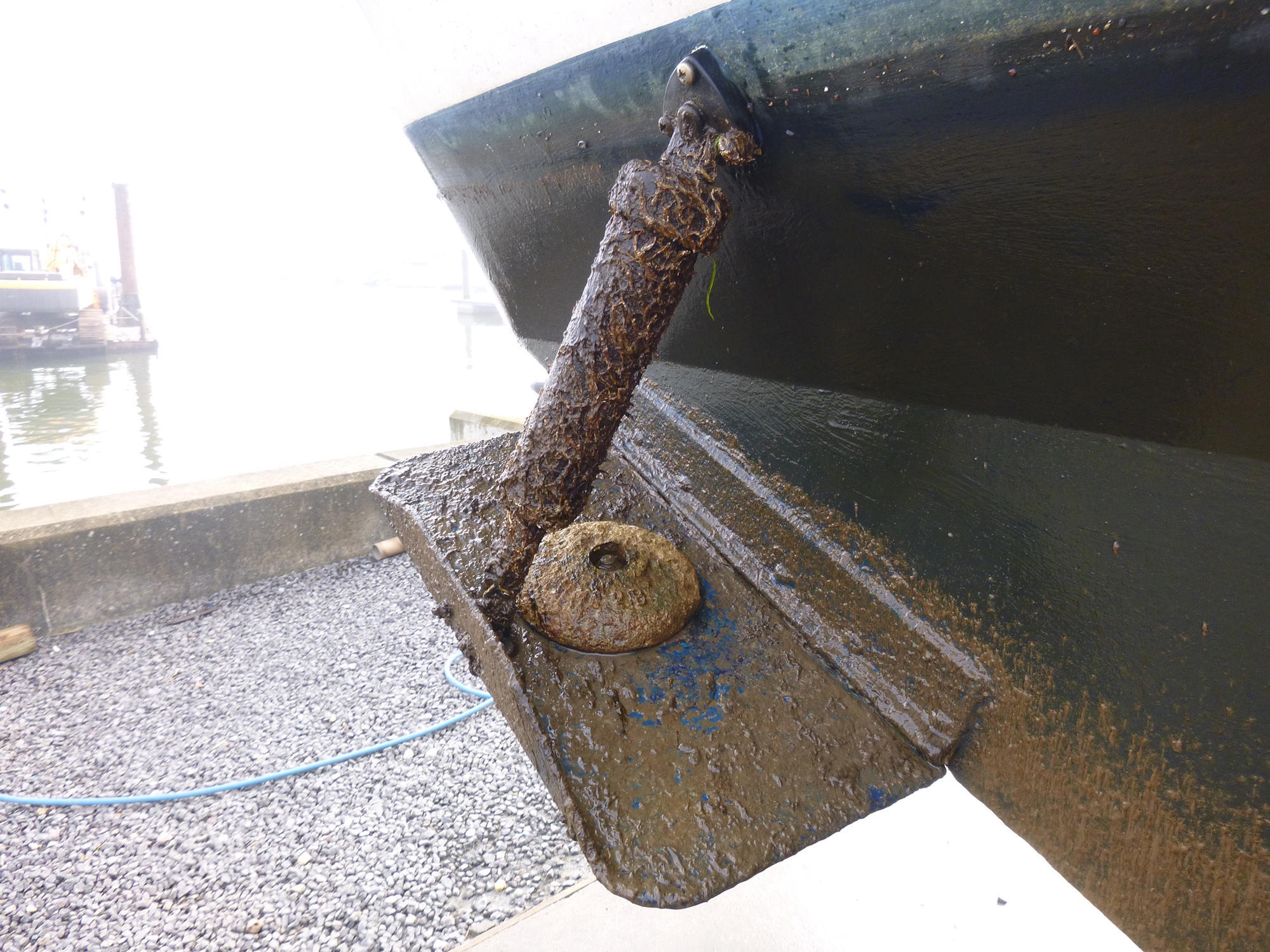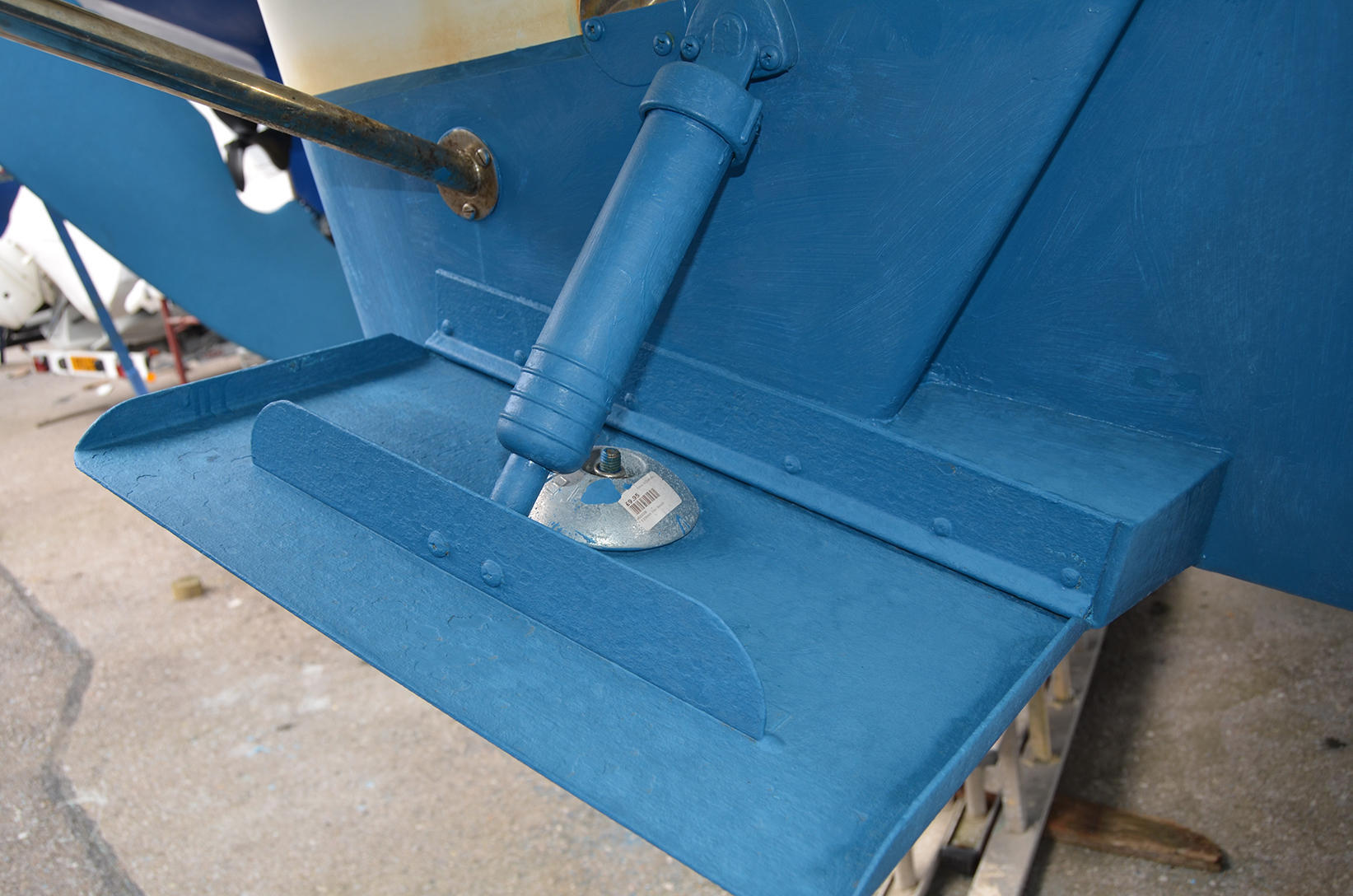
Are you in trim for the season? Trim tabs can give a better ride and save fuel when set properly. Get them fully functioning before your summer cruise.
1) How do I check if my trim tabs work? If you can borrow a second pair of hands, check that both trim tabs extend and retract at the same speed and range. A rough guide that the ram should extend between 4 – 6 inches.
2) Do I need to change or top up hydraulic fluids? The fluid in the reservoir should be clean – if the fluid is cloudy this is a sign of water ingress into the system. The fluid level should stay within the guided level when operated in both bow up and down positions.
3) How can corrosion be prevented? Trim tabs need sacrificial protection to avoid corrosion, usually a small bar anode fitted to the inside ram bracket. We advise adding a disc anode to the topside of each tab.

Trim tabs improve a yachts performance and comfort for many owners. Understanding how to operate and position the tabs along with simple maintenance checks can improve the vessel’s ride and performance over a broader range of conditions.
Trim tabs provide lift to control the roll or pitch of the vessel. Adjusting the pitch can achieve the boat to plane at lower speeds increasing fuel efficiency, visibility and improving the comfort of the ride. The roll of the boat can be amended by the tabs creating lift on either side of the vessel creating a pleasant ride and smooth boat handling.
Keeping your trim tabs working effectively involves minimal maintenance and checks.
Check hydraulic fluid level – The majority of trim tab systems, the reservoir tank and pump are located in the engine compartment. The fluid inside the reservoir should appear clean, if the fluid is cloudy this is a sign of water ingress into the system. The fluid level should stay within the guided level when operated in both bow up and down positions. Only use the recommended fluid to top up the reservoir.
Check the trim range – If you can borrow a second pair of hands, check that both trim tabs extend and retract at the same speed and range. A rough guide that the ram should extend between 4 – 6 inches.
Checking for corrosion – Trim tabs do require sacrificial protection to avoid corrosion. Most trim tabs are installed with a small bar anode fitted to the inside ram bracket. In most cases, this anode doesn’t provide enough protection and it is advised to fit a disc anode to the topside of each trim tab. A check of the wiring loom and connections is advisable each year, and check corrosion of any exposed connectors.
Common Faults – The main common fault is the indication lights on the control panel displaying an incorrect position or an orange flashing light. This is a sign of a damaged sensor inside the ram.
Condition – The condition is to descale and burnish the stainless steel trim planes and check for corrosion around the trim planes and hinge plates, anodes (ensure anodes are large enough for the area of blade for the trim plane. We replace a lot of the bar anodes with donut-shaped).
Function test – Check that full stroke of the actuator is being achieved, ie. Full up and full down. Check and top up the fluid, check and descale the actuators, any sale on the piston rod will damage the oil seals, oil seal leaks are easily visible when the yacht is afloat and when ashore you will easily see this around the leakage.


